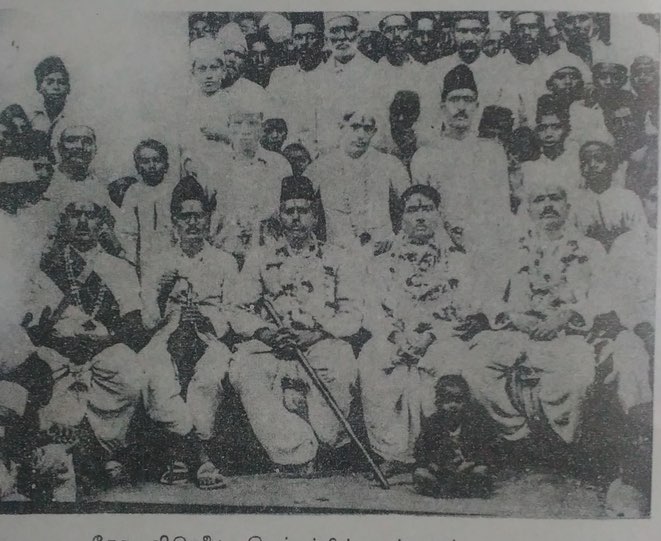The Rashtriya Swayamsevak Sangh (RSS) played a stellar role in India’s freedom struggle. The organisation was set up in 1925 and its founder Dr Keshav Baliram Hedgewar went to jail twice in 1921 and 1931. He was also a member of the revolutionary organisation Anushilan Samiti and participated in revolutionary activities in Kolkata where he went to study medicine.
One of the key objectives of setting up the RSS was to attain freedom for the country and the RSS volunteers not only participated but laid their lives for the same. When Congress declared ‘Purna Swaraj’ at its Lahore session in 1929, the RSS celebrated it at all its Shakhas officially.
RSS and Quit India Movement
When the “Quit India” movement started in 1942, the RSS swayamsevaks (volunteers) participated in it under the guidance and leadership of its second Sarsanghchalak MS Golwalkar. In Vidarbha region of the Indian state of Maharashtra, swayamsevaks of Chimur launched an agitation under the leadership of Ramakant Deshpande. The agitation soon turned violent and a few Britishers were also killed. This episode became famous in the history of this movement as the ‘Chimur Ashti episode’.
The heroic story of RSS Swayamsevak Hemu Kalani of Sakkhar town in Sindh also remains unknown. Kalani was arrested for removing fishplates from the railway tracks as a part of the revolutionaries’ plans to restrict the movement of British troops to suppress the freedom struggle Hemu was awarded the death sentence by the Army Court in 1943.
The Congress Committee member of Solapur, Ganesh Bapuji Shinkar had taken part in the satyagraha to press for the removal of ban on the Sangh in 1948 (The RSS was banned by the Nehru government wrongly after the assassination of Mahatma Gandhi. The ban had to be lifted later). He had resigned from the Congress on grounds of democratic ethics before joining the satyagraha. He issued a statement clarifying his stand and it was published on 12th December, 1948. He says, “I had participated in the Quit India movement in 1942. The capitalist and agrarian community was scared of the government at that time. Therefore, we were not offered safe haven in their homes. We had to stay in Sangh (RSS) workers’ homes to work underground. People from the Sangh used to help us happily with our underground work. They also took care of all our requirements. Not only this, if someone from amongst us fell sick, the Sangh swayamsevak doctors used to treat us. Sangh swayamsevaks, who were advocates, used to fight our cases fearlessly. Their patriotism and value-based lifestyle was undisputable.”
RSS Safehouses for revolutionaries
The house of Sanghchalak of Delhi (Head of Delhi unit of RSS), Lala Hansraj, was used by well-known freedom fighter Aruna Asaf Ali to remain underground. In an interview published in Hindi daily, Hindustan in August 1967, she recalled, “I was underground in 1942 agitation; Delhi Sanghchalak, Lala Hansraj provided me refuge in his house for 10-15 days and arranged for my complete safety. He saw to it that nobody got information about my stay at his house.”
Famous Vedic scholar, Pandit Shripad Damodar Satavalekar was the Sanghchalak of Aundh (Maharashtra). He arranged for the stay of revolutionary underground leader, Nana Patil at his own house. Patil was known to have experimented with the novel idea ‘Patri Sarkar’. Patil’s colleague, Kisanveer had stayed at the house of Satara (Maharashtra) Sanghchalak while running an underground campaign against the British.
Famous socialist leader, Achyutrao Patwardhan had stayed at the homes of several RSS swayamsevaks when was part of the underground movement against the British.
British CID Reports
During 1940 to 1947, the CID kept sending reports about the expansion of the RSS and the way Golwalkar was spreading fire of patriotism amongst masses across the country. The RSS had become a major headache for the British. A report of 30th December, 1943 says, “Rashtriya Swayamsevak Sangh is moving ahead rapidly towards building a highly significant all-India organisation. Spokesmen of the Sangh keep saying that the basic goal of the Sangh is to achieve Hindu unity… In a programme in November 1943 at Lahore, M.S. Golwalkar declared that the Sangh’s objective is to remove the feeling of untouchability and weave together all sections of Hindu society in a single unifying thread.”
The report added, “Membership of the Sangh is swelling continuously. A new dimension to their growth is their efforts to gain entry in the villages. The Sangh office-bearers from its head office are touring the Shakhas in remote areas continuously, so that they can heighten interest of the swayamsevaks in Sangh work, give them secret directions and strengthen the local organisation. We can see the recent well spread-out tour of the present chief of the Sangh, M.S. Golwalkar as an example of such efforts. In the last month of April, he was in Ahmedabad; in May, he was at Amravati and Pune. In June, he was at Nasik and Benaras. He toured Chanda in August, Pune in September, Madras and Central Provinces in October and Rawalpindi in November.”
No hankering for credit
It clearly shows that the RSS rapidly expanded in the 1940s as it gained respect of the masses with its volunteers’ participation in the freedom struggle.
The RSS volunteers worked silently initially in the freedom struggle and then as the day of independence came close, the RSS led from the front to save millions of lives during partition and brought the hapless Hindus and Sikhs back to India. That is another glorious chapter that depicts the valour and commitment of the RSS swayamsevaks about which we would talk in the next week’s column.
